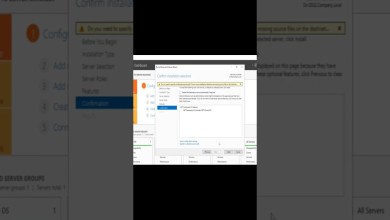How To Replace Errors In Excel | Your Comprehensive Guide! | Excel Explores #excel #exceltips
Errors in Excel can be frustrating and can impede the accuracy and professionalism of your work. Whether you’re dealing with a large dataset or creating complex formulas, errors can pop up unexpectedly and disrupt your workflow. However, Excel provides numerous tools and techniques to handle these errors efficiently. This comprehensive guide will walk you through various methods to replace and manage errors in Excel, helping you
maintain clean and error-free spreadsheets.
In this video, we’ll explore different types of errors you might encounter in Excel, such as #DIV/0!, #N/A, #VALUE!, and more. We’ll then dive into practical solutions, including functions like IFERROR, IFNA, ISERROR, and ISNUMBER, as well as strategies for using Find and Replace, Conditional Formatting, and VBA scripting to handle errors effectively. By the end of this guide, you’ll be equipped with the knowledge to tackle any error that comes your way in Excel.
Understanding Common Excel Errors
Before we learn how to replace errors, it’s essential to understand the types of errors you might encounter in Excel:
#DIV/0!: This error occurs when a number is divided by zero or an empty cell.
#N/A: This indicates that a value is not available, often seen with lookup functions like VLOOKUP or HLOOKUP.
#VALUE!: This error arises from incorrect data types or invalid operations.
#REF!: This error occurs when a cell reference is invalid, often due to deleted rows or columns.
#NAME?: This indicates a problem with the formula name or text within the formula.
#NULL!: This error appears when an intersection of two areas that do not intersect is specified.
#NUM!: This error happens due to invalid numeric values or operations.
#SPILL!: This occurs when a formula returns multiple results, but there isn’t enough space to display them all.
Methods to Replace Errors in Excel
1. Using the IFERROR Function
The IFERROR function is a versatile and straightforward way to handle errors in Excel. It can catch any error and replace it with a specified value or alternative expression.
Syntax:
scss
Copy code
IFERROR(value, value_if_error)
value: The formula or expression to evaluate.
value_if_error: The value to return if an error is found.
Example:
Suppose you have a formula that might result in an error, such as dividing numbers:
Copy code
=A1/B1
To handle potential errors, you can use IFERROR:
scss
Copy code
=IFERROR(A1/B1, “Error”)
If the formula A1/B1 results in an error, “Error” will be displayed instead.
Advantages:
Simple to Use: Easy to implement in existing formulas.
Versatile: Works with all types of errors.
Disadvantages:
Limited Control: Replaces all errors with the same value or expression.
2. Using the IFNA Function
The IFNA function is similar to IFERROR, but it specifically handles the #N/A error. This is particularly useful when dealing with lookup functions.
[ad_2]
source



